Author: Chris
Samsung Galaxy F15 vs. Moto G34: 8GB RAM, 6000mAh Battery!
Welcome to the face-off between the Samsung Galaxy F15 vs. Moto G34, each boasting 8GB RAM and a 6000mAh battery! Scroll down to see which phone is the best fit for you!
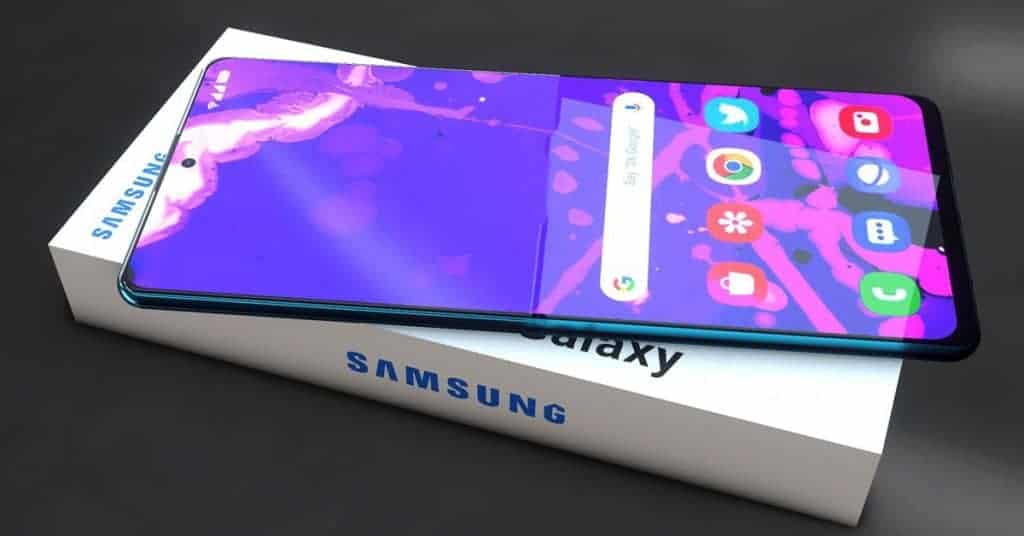
Samsung Galaxy F15 vs. Moto G34 specs
The Samsung Galaxy F15 is set to launch with advanced camera technology and high-end specifications. In contrast, the Moto G34 comes with an impressive long-lasting battery. In detail, the Samsung Galaxy F15 specs flaunt a 6.6-inch Super AMOLED with a 1080 x 2340 pixels resolution, a flat, easy-to-grip design, and round navigation buttons. Conversely, the Moto G34 specs offer a 6.5-inch IPS LCD with a 720 x 1600 pixels resolution.
Therefore, the Samsung handset is ahead in this round due to its higher screen size. Under the hood, the Samsung device provides the Mediatek Dimensity 6100+ chipset. Meanwhile, the Motorola handset accepts power from the Qualcomm Snapdragon 695 5G as the processor. Move on to the capacity! The Samsung machine comes with 128GB/ 4GB RAM, 128GB/ 6GB RAM, and 128GB/ 8GB RAM (expandable to 256GB via a microSD card).
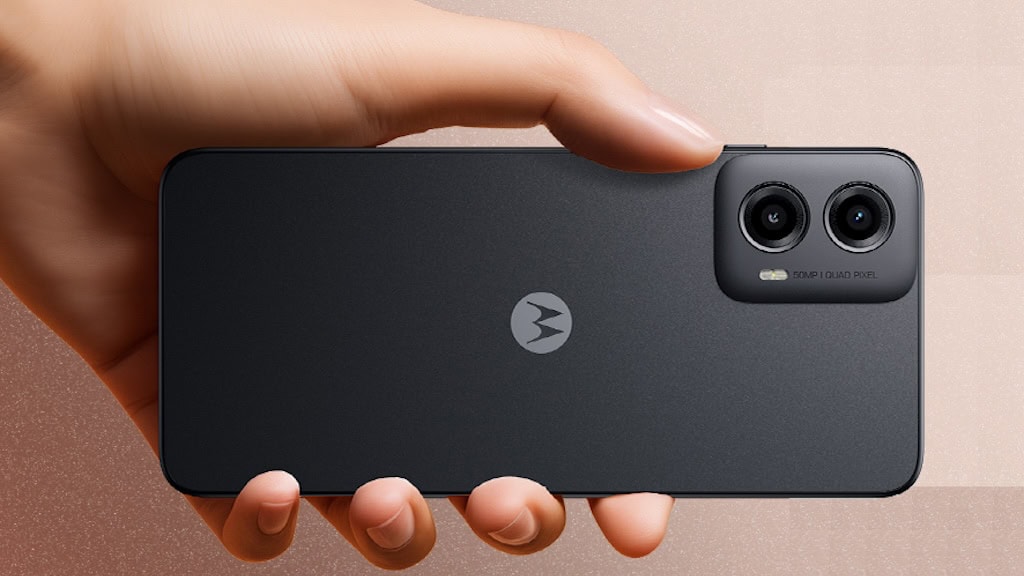
Moreover, the Motorola handset arrives with 8GB RAM and 128GB of internal storage (no card slot). Furthermore, the Samsung smartphone works on Android 14-based One UI 6, whereas the Motorola handset runs on Android 13 as the operating system. As a result, the Nokia phone wins this round because of its better storage capacity, hardware, and software. Regarding the optics department? The Samsung Galaxy F15 cameras sport triple 50MP + 5MP + 2MP shooters and a single 13MP selfie snapper. Moreover, the Moto G34 cameras pack a triple-lens set up on the back. It comprises 50MP + 2MP shooters. The back of it has a 16MP sensor for selfies. As for capacity, the Samsung handset houses a 6000mAh battery cell while its opponent bears a smaller 5000mAh juice box. Thanks to the massive battery and higher camera resolutions, the Samsung team has one more point in this round. Finally, the Samsung Galaxy F15 wins the game with excellent specs.
Samsung Galaxy F15 vs. Moto G34 release date and price
The Samsung Galaxy F15 release date occurred in March 2024. On the contrary, the Moto G34 release date occurs in December 2023, making it available. Concerning the cost, the Samsung Galaxy F15 price starts at $174~ Rs. 14,499. Plus, the Moto G34 price falls around $143 ~ Rs. 11,894. Drop us a comment below to share your opinion!
Nokia P Lite vs. Vivo T3x: 108MP Cameras, 6000mAh Battery!
Introducing the ultimate showdown: the Nokia P Lite vs. Vivo T3x with 108MP cameras and a 6000mAh battery! Dive in to discover which powerhouse comes out on top!
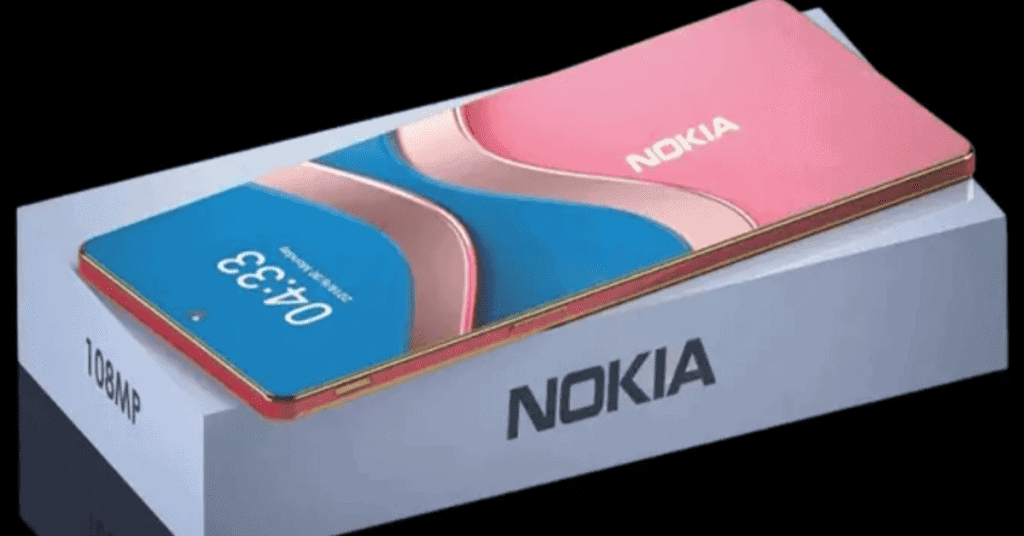
Nokia P Lite vs. Vivo T3x specs
Nokia P Lite should arrive with massive storage and fantastic hardware. Moreover, Vivo T3x has a compact design and a great camera system. In detail, the Nokia machine ships with 8GB/ 12GB of RAM. Simultaneously, there are two options: 256GB/ 512GB of ROM. Furthermore, the Nokia device has enormous 1TB external storage support through the MicroSD card.
Conversely, the Vivo has various variants: 128GB/ 4GB RAM, 128GB/ 6GB RAM, 128GB/ 8GB RAM, and 256GB/ 8GB RAM (expandable to 256GB via a microSDXC card slot). So, the Nokia team scores the first goal with the largest RAM. Let’s talk about the display! Nokia P Lite specs flaunt 6.8-inch Super AMOLED with a 4K resolution, a tall 21:9 aspect ratio, and Corning Gorilla Glass Victus protection.
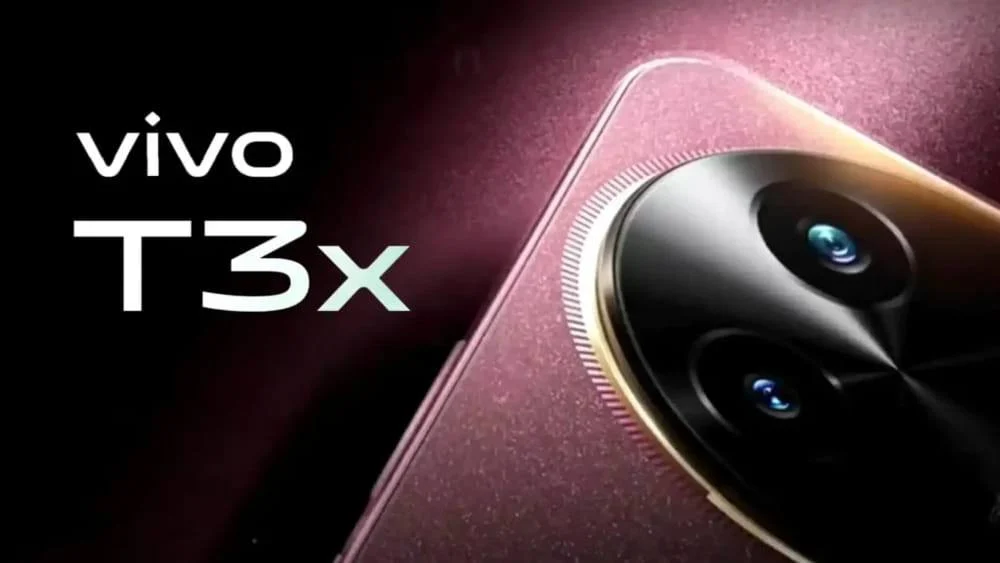
Besides, the Vivo T3x specs feature a 6.72-inch IPS LCD with a 1080 x 2408 pixels resolution. Due to the larger screen size, the Nokia handset gets this point. On the other hand, the Nokia machine runs on the Qualcomm Snapdragon 8 Gen 2 chipset. Meanwhile, the Vivo device takes power from the Qualcomm Snapdragon 6 Gen 1 chipset. Notably, the Nokia and Vivo smartphones work on Android 14 as the operating system. Regarding the optics system, the Nokia P Lite cameras consist of 108MP primary lens + 32MP secondary shooter + 8MP ultrawide snapper + 8MP depth sensor. Moreover, the selfie shooter has a dual 32MP + 8MP lens on the front. Otherwise, the Vivo T3x cameras feature a dual 50MP primary lens + 2MP depth shooter on the back. This Vivo device carries an 8MP selfie sensor. Therefore, the Nokia flagship scores one point with higher camera resolutions. About capacity, the Nokia handset comes with a non-removable 8000mAh juice box, while the Infinix rocks a smaller 6000mAh energy box.
Nokia P Lite vs. Vivo T3x release date and price
The Nokia P Lite release date should fall at the end of the year. Moreover, the Vivo T3x release date occurred in April 2024. As for the cost, the Nokia P Lite price starts at $400 ~ Rs. 30,999. In contrast, the Vivo T3x price begins at around $162 ~ Rs. 13,568. Please share your thoughts on this match in the comments section below!
Nokia Arrow Pro 2024 Specs: 200MP Cameras, 13400mAh Battery!
Today, let’s meet the Nokia Arrow Pro 2024, which has impressive specs like 200MP cameras and a 13400mAh battery. Check it out right below!
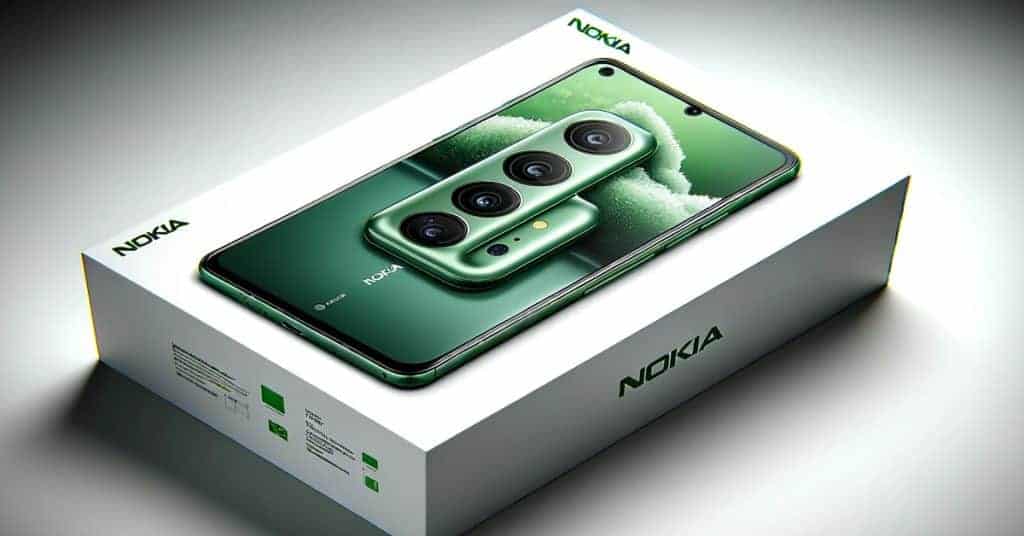
Nokia Arrow Pro 2024 specs
Introducing the Nokia Arrow Pro 2024, an upcoming flagship smartphone from Nokia. This device, part of the Nokia Arrow lineup, is set to make a splash with its unique features. The Nokia Arrow Pro 2024 boasts a 6.9-inch IPS LCD with 1080 x 2400 pixels resolution, a Corning Gorilla Glass Victus protection, and a tall 21:9 aspect ratio, all powered by the Qualcomm Snapdragon 8 Gen 2 SoC.
Furthermore, this Nokia device brings the Corning Gorilla Glass Victus protection and a tall 21:9 aspect ratio. Powering the Nokia device is the Qualcomm Snapdragon 8 Gen 2 SoC. Besides, speaking of storage, the Nokia smartphone arrives with 8GB/ 128GB RAM, 12GB/ 256GB RAM, and 16GB/ 512GB RAM in terms of storage. It can be expandable up to 512GB via a MicroSD card).
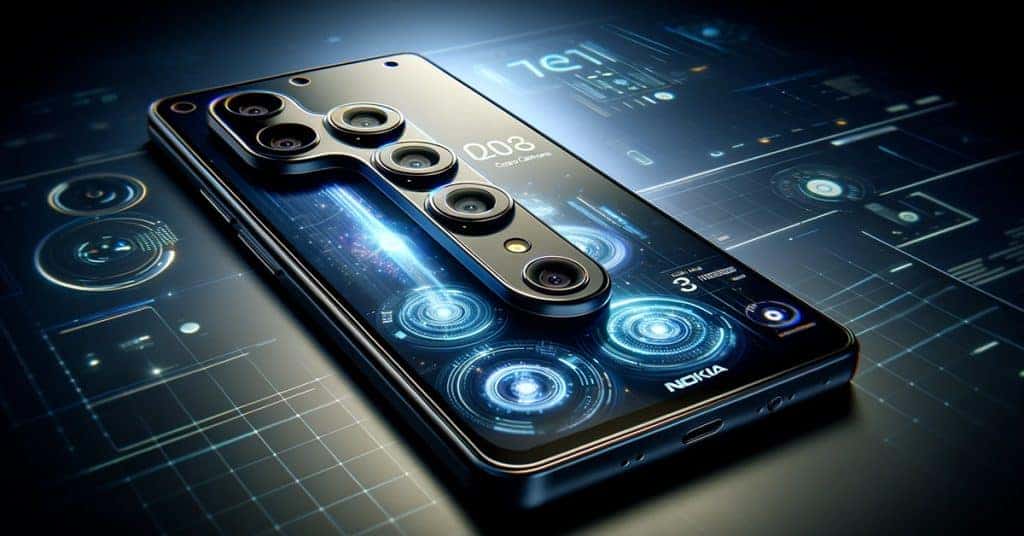
Besides, the Nokia flagship runs on Android 14 as the operating system. On the other hand, Nokia Arrow Pro 2024 cameras feature a triple camera setup. It consists of 200MP primary lens + 32MP ultrawide sensor + 8MP depth sensor with LED Flash. At the front, this Nokia beast sports a single 50MP snapper for taking selfies and video calling. How about the battery? Nokia machine packs a 13400mAh juice box that supports fast battery charging. Other connectivity options include 5G VoLTE, Wi-Fi, Bluetooth, GPRS, etc.
Nokia Arrow Pro 2024 release date and price
According to our legitimate source, the Nokia Arrow Pro 2024 release date should fall in the upcoming months. Concerning the cost, the Nokia Arrow Pro 2024 price starts at $289 ~ Rs. 19,041. Are you going to own this smartphone? Stay tuned for further information from us!
HMD Aura vs. Redmi K70e: 64MP Cameras, 5500mAh Battery!
Witness the duel of innovation: HMD Aura vs. Redmi K70e packed with 64MP cameras and a 5500mAh battery! Unveil the champion by reading further!
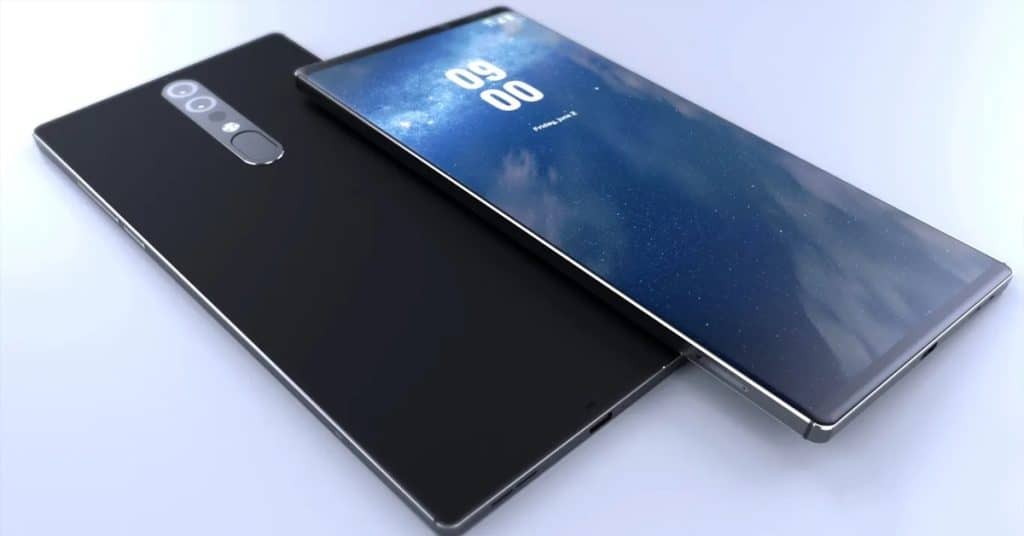
HMD Aura vs. Redmi K70e specs
HMD Aura appeals to smartphone enthusiasts with its extended battery longevity and striking color palette. Conversely, the Redmi K70e was introduced, boasting a high-quality camera setup and contemporary aesthetics. About the display, the HMD Aura specs offer a 6.56-inch IPS LCD with a 900 x 1600 pixels resolution. Besides, Redmi K70e specs offer a 6.67-inch OLED with a 1220 x 2712 pixels resolution.
Therefore, the Xiaomi monster wins with fantastic display technology. Moreover, the HMD smartphone runs on Android 13, while the Xiaomi beast boots Android 14 as the operating system. In detail, the HMD handset boots 4GB RAM and 64GB of internal storage (expandable to 256GB via a microSD card). Furthermore, the Xiaomi handset has 256GB/ 8GB RAM, 256GB/ 12GB RAM, 512GB/ 12GB RAM, and 1TB/ 16GB RAM (no card slot).
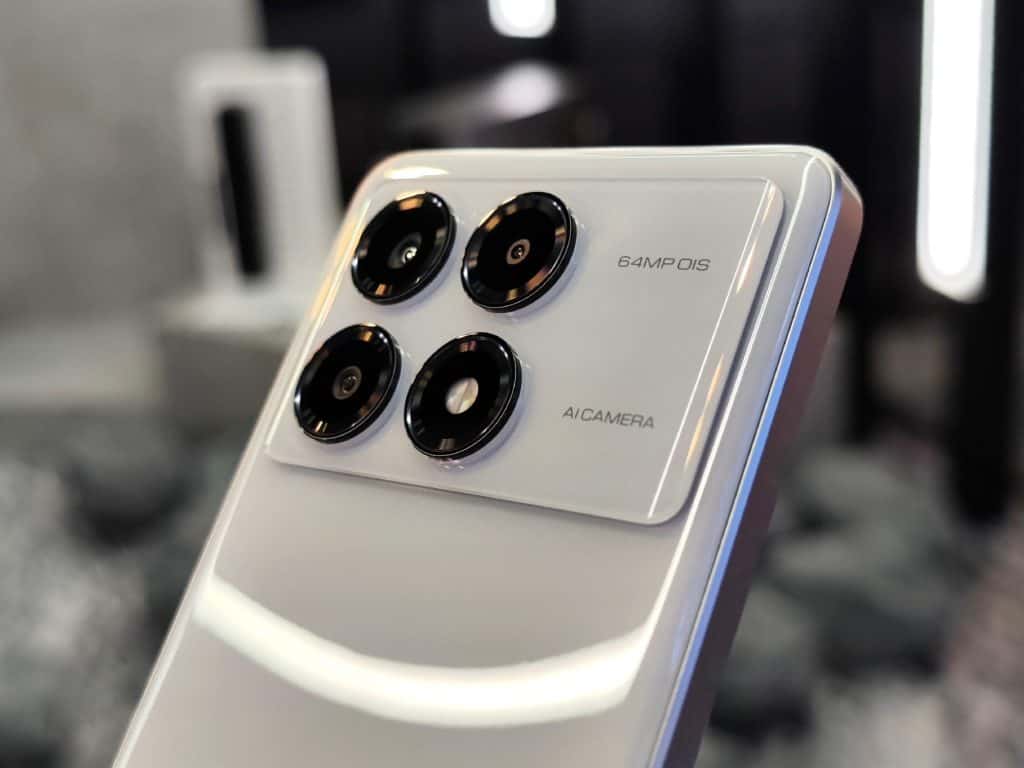
On the other side, the HMD device uses the Unisoc SC9863A1, while the opponent accepts power from the MediaTek Dimensity 8300 Ultra SoC. As a result, the Xiaomi flagship gains a point in this round with bigger RAM. Let’s talk about the photography department! In detail, the HMD Aura cameras consist of 13MP primary lens + auxiliary lens at the rear and a dual 50MP + 20MP shooter for selfies. Thus, the Redmi K70e camera arrives with 64MP + 8MP + 2MP lenses on the rear. For taking selfies and video calling, there is a 16MP front-facing lens. Battery-wise, the HMD handset houses a 5000mAh energy box. Also, the Xiaomi device carries a larger 5500mAh juice box. Hence, the Xiaomi beast wins this round with more massive cameras.
HMD Aura vs. Redmi K70e release date and price
The HMD Aura release date occurred in May 2024, while the Redmi K70e release date happened in November 2023 as well. For the cost, the HMD Aura price starts at $119 ~ Rs. 9,905. Meanwhile, the Redmi K70e price begins at around $140 ~ Rs. 11,679. Stay tuned and get more information from us!
Top premium phones May 2024: 200MP Cameras, 5500mAh Battery!
Check out the top premium phones in May 2024, featuring specs such as 200MP cameras and a 5500mAh battery. Discover more details about our selections below!
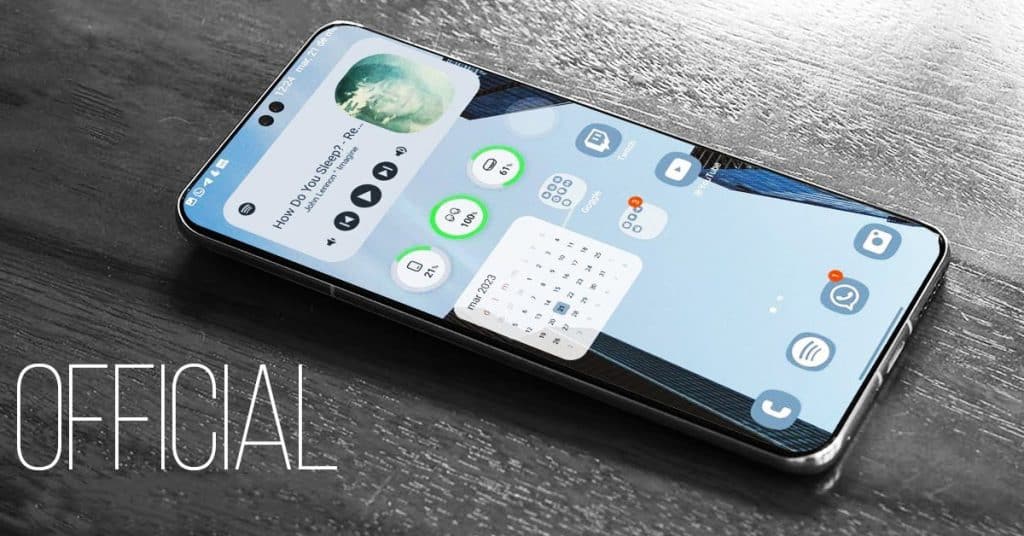
1. Huawei Pura 70 Ultra
In May, we selected the first candidate on our list of the top premium phones in May 2024 – the Huawei Pura 70 Ultra. Notably, this Asus flagship comes out with premium specs, smooth configurations, and powerful performances. Let’s move to the detailed specs of this smartphone! In detail, the Huawei Pura 70 Ultra comes out with a unique look, massive storage, and a large battery. Let’s hear what we know about the first member now! The Huawei Pura 70 Ultra specs offer a 6.8-inch LTPO OLED display with a 1260 x 2844 pixels resolution.
How about other configurations? The Huawei phone runs on HarmonyOS 4.2 as the operating system. Furthermore, the Huawei Pura 70 Ultra hardware uses the Kirin 9010 SoC. Furthermore, the Huawei Pura 70 Ultra gadget is available in 512GB/ 16GB RAM and 1TB 16GB RAM (no card slot). The Huawei Pura 70 Ultra cameras contain 50MP primary lens + 50MP telephoto + 40MP ultrawide sensor and a 13MP front-facing lens. The Huawei Pura 70 Ultra also comes with a 5200mAh battery cell. Concerning the cost, the Huawei Pura 70 Ultra price starts at $1,381 ~ Rs. 115,124.
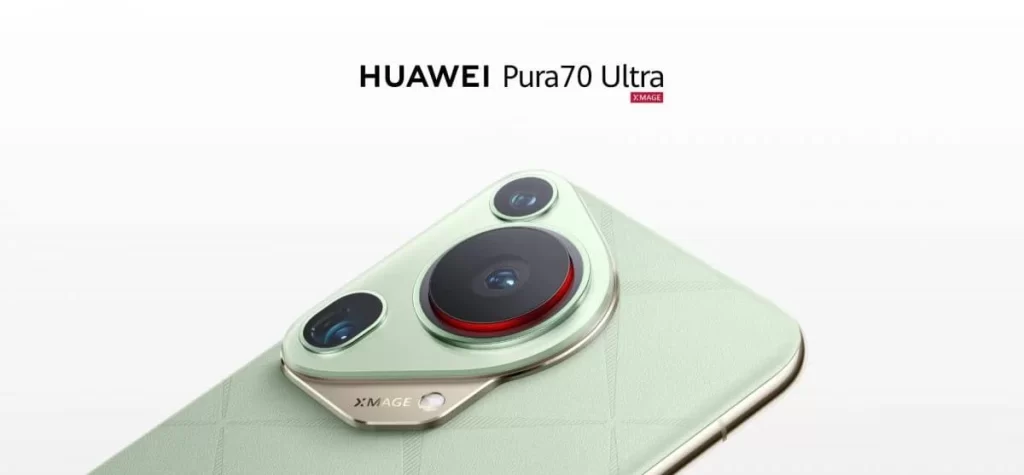
2. OnePlus Open
The OnePlus Open is the second candidate on our list of the top premium phones in May 2024. Let’s introduce the full details of this smartphone here! Concerning the display, the OnePlus Open specs pack a 7.82-inch Foldable LTPO3 Flexi-fluid AMOLED screen with 2268 x 2440 pixels. Further, its cover display is a 6.31-inch LTPO3 Super Fluid OLED with 1116 x 2484 pixels. Under the hood, the OnePlus machine drives the Qualcomm Snapdragon 8 Gen 2 chipset. Let’s go to the memory department of this device! In detail, the OnePlus phone arrives with 16GB RAM and 512GB of internal storage (no card slot). Imaging-wise, the OnePlus Open cameras boast triple 48MP + 64MP + 48MP rear lenses and a single 20MP front-facing shooter, and the cover camera is a 32MP sensor. Further, the Oppo device juice box gets a 4805mAh capacity. Software-wise, the OnePlus handset runs on Android 14. Lastly, the OnePlus Open price starts around $1,219 ~ Rs. 101,784.
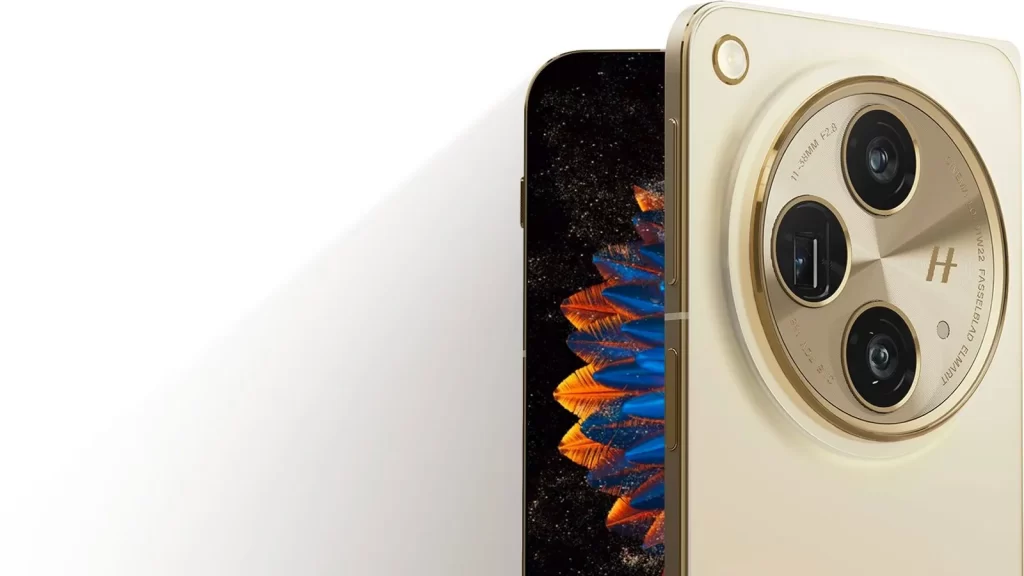
3. Samsung Galaxy S24 Ultra
The giant Korean firm launches the Samsung Galaxy S24 Ultra smartphone with incredible specs and a fashionable design. Besides, this flagship was released in the stunning colors Titanium Black, Titanium Gray, Titanium Violet, Titanium Yellow, Titanium Blue, Titanium Green, and Titanium Orange. Let’s find out more details on this handset now! Concerning the display, Samsung Galaxy S24 Ultra specs pack a 6.8-inch Dynamic LTPO AMOLED 2X with 1440 x 3088 pixels. Under the hood, the Samsung beast drives the Qualcomm Snapdragon 8 Gen 3 chipset. Besides, the Samsung flagship sports 256GB/ 12GB RAM, 512GB/ 12GB RAM, and 1TB/ 12GB RAM (no card slot). Imaging-wise, the Samsung Galaxy S24 Ultra cameras boast 200MP + 50MP + 10MP + 12MP rear lenses and a 12MP front-facing shooter for selfies. Besides, the Samsung juice box has a 5000mAh capacity. The operating system, the Samsung Monster, runs on Android 14. The Samsung Galaxy S24 Ultra price starts at $1,299 ~ Rs. 108,012.
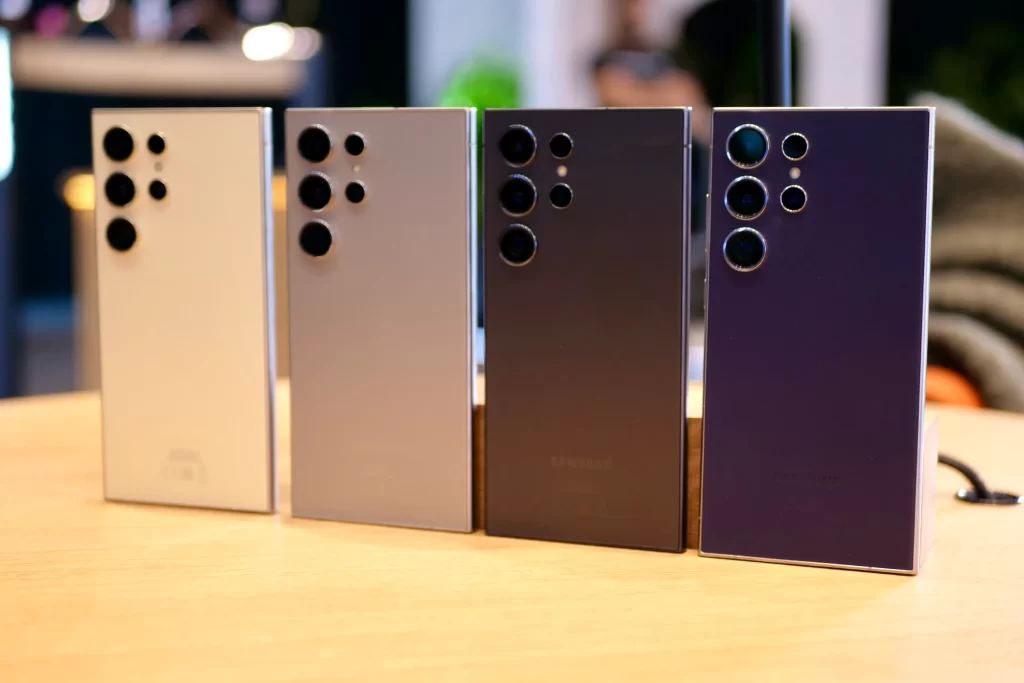
4. Vivo X100 Ultra
Let’s come to the next device today! Vivo X100 Ultra specs boot a 6.78-inch LTPO AMOLED with a 1440 x 3200 pixels resolution. Software-wise, the Vivo machine boots Android 14-based OriginOS 4. Meanwhile, this device’s hardware system is the Qualcomm Snapdragon 8 Gen 3 chipset, paired with 256GB/ 12GB RAM, 512GB/ 16GB RAM, and 1TB/ 16GB RAM (no card slot). Also, the Vivo X100 Ultra cameras carry 50MP primary lens + 200MP periscope telephoto + 50MP ultrawide sensor on the back and a single 50MP lens for selfies. Battery-wise, this device comes with a 5500mAh juice box. Lastly, the Vivo X100 Ultra price falls at $896 ~ Rs. 74,809.
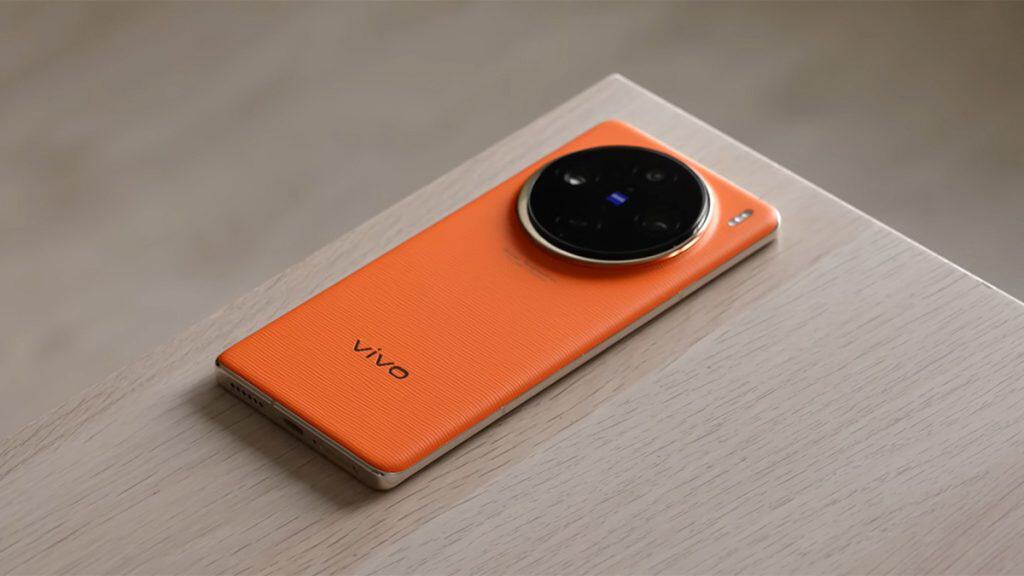
5. Xiaomi 14 Ultra
Xiaomi 14 Ultra is the last member of our list of the top premium phones in May 2024. Notably, the Xiaomi smartphone comes with a large battery and premium configurations. In detail, the Xiaomi flagship comes out with a unique design, massive storage, and a long-life battery. Concerning the next candidate, the Xiaomi 14 Ultra specs feature a 6.73-inch LTPO AMOLED with a 1440 x 3200 pixels resolution for the display. Under the hood, the Xiaomi device runs on Android 13-based MIUI 14. It provides the Qualcomm Snapdragon 8 Gen 3 chipset. Further, the Xiaomi smartphone sports 256GB/ 12GB RAM, 256GB/ 16GB RAM, 512GB/ 16GB RAM, and 1TB/ 16GB RAM (no card slot). What are the other specs of this smartphone? As for an optics system, the Xiaomi 14 Ultra cameras comprise quad 50MP + 50MP + 50MP + 50MP rear sensors. Back to front, the Xiaomi phone has a single 32MP front lens. Additionally, the Xiaomi device bears a 5300mAh battery box. Finally, the Xiaomi 14 Ultra price starts at $399 ~ Rs. 33,118.
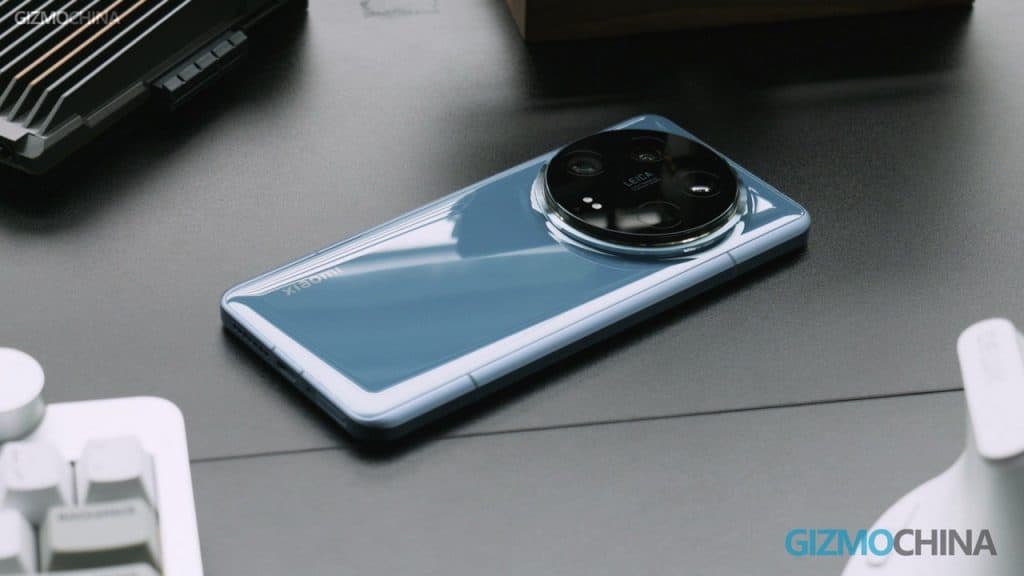
Top premium phones May 2024
The above smartphones are the top premium phones in May 2024. We highly recommend the Huawei Pura 70 Ultra, which has powerful specs and a huge battery capacity. Moreover, the OnePlus Open is also an excellent smartphone with robust hardware. Stay tuned and get more information from us in the following reports!
Oppo Reno12 Series Specs: 16GB RAM, 5000mAh Battery!
Unleash the power of innovation with the Oppo Reno12 Series, equipped with 16GB RAM and a 5000mAh battery. Continue reading to explore the amazing Oppo Reno12 Series specs!
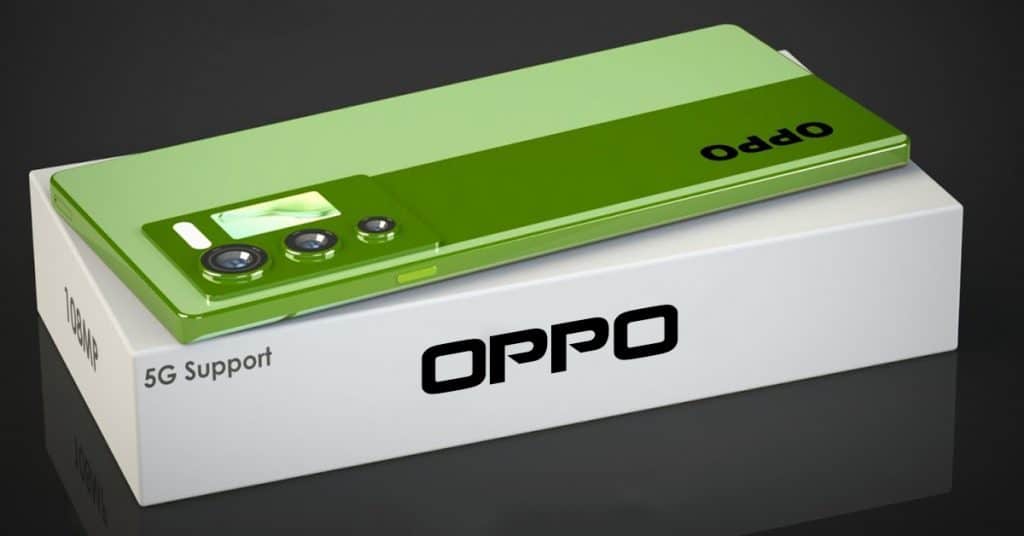
Oppo Reno12 Series specs
Oppo is renewing its successful Reno brand with two new models, the Reno12 and Reno12 Pro, the first to have a quad-curved display. They are also slimmer and lighter than their Reno11 predecessors while also being more durable. Additional AI functions include dictation transcription and summarization, as well as a document scanner capable of handling even complex mathematical computations.
The phone’s Xiaobu assistant may also serve as an English instructor and elementary school tutor. The AI can also help you plan your next holiday and develop a personalized itinerary. The Reno12 is available in three colors: Millennium Silver, Soft Peach, and Ebony Black, while the Reno12 Pro comes in Silver Fantasy Purple, Champagne Gold, and Ebony Black.

Let’s delve into the Oppo Reno12 Series specs and see how they compare to their predecessors. The Oppo Reno12 boasted a 6.7-inch AMOLED display with a 1080 x 2412 pixels resolution. The Oppo Reno12 Pro, on the other hand, offers a similar 6.7-inch AMOLED display with 1080 x 2412 pixels, maintaining the high-quality visual experience. In addition, the Oppo Reno12 Series runs on Android 14-based ColorOS 14.1 as the operating system. Powering these Oppo Reno12 is the Mediatek Dimensity 8250 chipset, whereas the Oppo Reno11 Pro provides the Mediatek Dimensity 9200+ SoC. Regarding the storage, Oppo Reno12 sports 256GB/ 12GB RAM, 256GB/ 16GB RAM, 512GB/ 12GB RAM, and 512GB/ 16GB RAM (no card slot). Additionally, the Pro model has 256GB/ 12GB RAM, 256GB/ 16GB RAM, and 512GB/ 16GB RAM (no card slot). Imaging-wise, the Oppo Reno12 Series cameras feature a triple 50MP primary lens + 50MP telephoto + 8MP ultrawide snapper on the back. Moving around the front, these smartphones offer a single 50MP lens for taking selfies and calling videos. Lastly, the Oppo Reno12 series rocks a 5000mAh battery cell with 80W wired charging support.
Oppo Reno12 Series release date and price
The Oppo Reno12 Series release date should fall in the upcoming weeks. Additionally, for the cost, the Oppo Reno12 price starts around $379 ~ Rs. 31,547. Meanwhile, the Oppo Reno12 Pro price is $477 ~ Rs. 39,705. Are you interested in owning these new flagship devices? Share your thoughts in the comments below!
Poco F6 vs. Moto G64: 12GB RAM, 6000mAh Battery!
Brace yourself for the tech battle of the year: Poco F6 vs. Moto G64 with 12GB RAM and a 6000mAh battery. See who takes the crown right now!
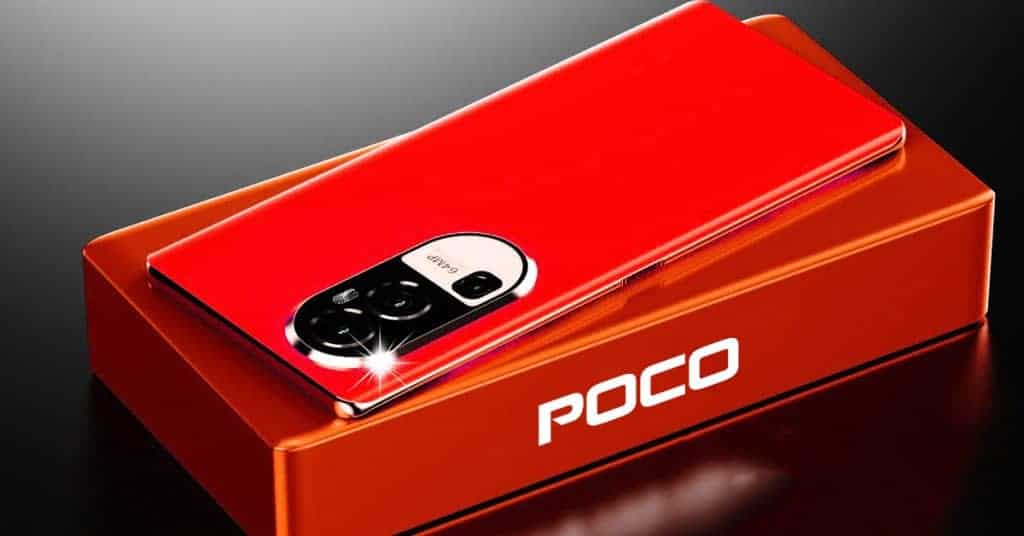
Poco F6 vs. Moto G64 specs
The Poco F6 is gearing up to launch with a massive battery. Besides, the Moto G64 arrives with a gorgeous design and powerful specs. In detail, the Xiaomi flagship carries a 5000mAh battery cell, while its rival figure is a larger 6000mAh juice box. Hence, the Motorola beast wins the first round. Under the hood, two handsets run on the latest Android 14 operating system.
The Xiaomi handset uses the Qualcomm Snapdragon 8s Gen 3 chipset for the processor, coupled with 8GB/ 12GB of RAM and 256GB/ 512GB of internal storage (no card slot). Furthermore, the Motorola device gets power from the Mediatek Dimensity 7025 SoC. The Motorola handset arrives with two options: 128GB/ 8GB RAM and 256GB/ 12GB RAM (expandable to 256GB).

With a more robust chipset, the Xiaomi handset wins this time. For the display, Poco F6 specs flaunt a 6.67-inch AMOLED with a 1220 x 2712 pixels resolution and 120Hz refresh rate. Furthermore, Moto G64 specs feature a 6.5-inch IPS LCD with a 1080 x 2400 pixels resolution. Thanks to the higher resolutions, the Nokia device gains again. Imaging-wise, the Poco F6 cameras pack a dual 50MP primary lens + 8MP ultrawide shooter on the back and a 20MP front-facing snapper. The Moto G64 cameras boast a dual 50MP primary lens + 8MP ultrawide shooter on the back. Thus, this device houses a single 16MP front-facing shooter. So, the Nokia beast wins the last round due to its high camera resolution.
Poco F6 vs. Moto G64 release date and price
The Poco F6 release date should fall in the upcoming days. Additionally, the Moto G64 release date occurred in April 2024. Regarding the cost, the Poco F6 price starts at $422 ~ Rs. 35,126. Meanwhile, the Moto G64 price is around $294 ~ Rs. 24,501. Which phone do you prefer? Please drop us a comment on your idea!
Nokia G99 Max vs. Vivo S19: 200MP Cameras, 18500mAh Battery!
Get ready for the ultimate face-off between the Nokia G99 Max vs. Vivo S19, each with 200MP cameras and an 18500mAh. Discover who takes the crown!
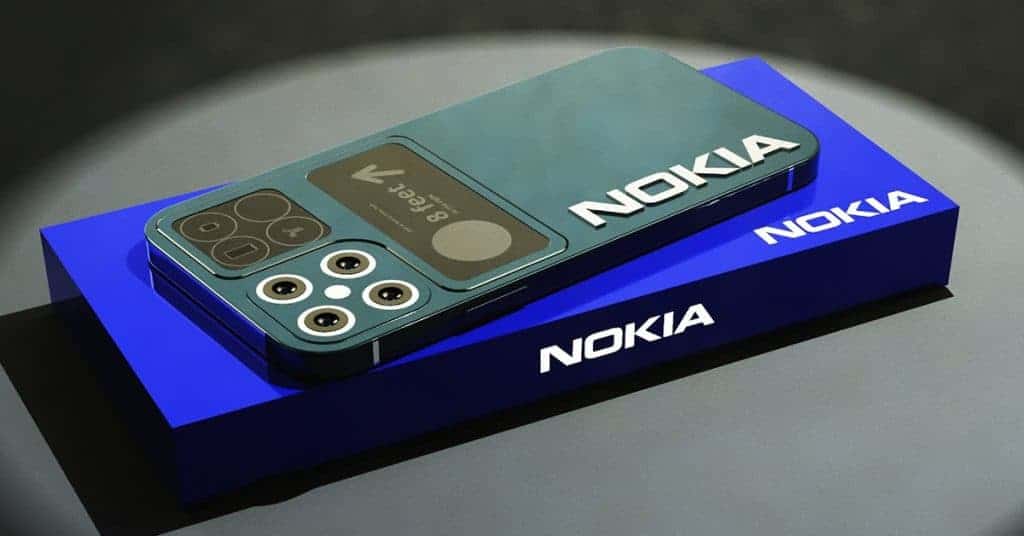
Nokia G99 Max vs. Vivo S19 specs
The Nokia G99 Max is expected to launch with impressive storage capacity and an outstanding camera setup. On the other hand, the Vivo S19 is set to come with an enormous battery and an elegant design. In detail, the Nokia G99 Max specs flaunt a 7.28-inch Super AMOLED+ screen with a 1440 x 2160 pixels resolution. In contrast, the Vivo S19 specs feature a 6.78-inch AMOLED with 1260 x 2800 pixels and a 120Hz refresh rate. So, the Nokia flagship wins the first round.
Then, the Nokia handset should take power from the Qualcomm Snapdragon 8 Gen 2 chipset. Also, the Vivo handset takes energy from the Qualcomm Snapdragon 7 Gen 3 chipset. Regarding memory, the Nokia flagship ships 12GB/ 16GB/ 18GB RAM and 256GB/ 512GB/ 1TB/ 2TB onboard storage versions. There should also be a microSD card slot to expand the device’s capacity to 1TB. Furthermore, the Vivo machine offers 256GB/ 8GB RAM, 256GB/ 12GB RAM, and 512GB/ 12GB RAM (no card slot).
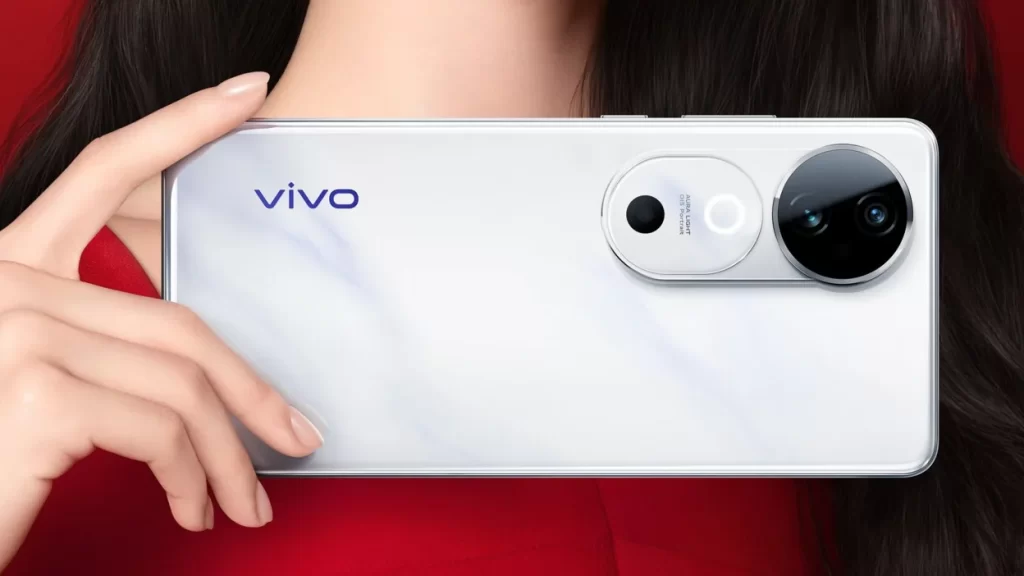
Under the hood, the Nokia and Vivo phones run on Android 13 as the operating system. Imaging-wise, the Nokia G99 Max cameras boast 200MP primary lens + 64MP telephoto + 50MP ultrawide snapper + 5MP macro sensor at the rear. At the front, it carries a single 50MP front-facing lens. Otherwise, the Vivo S19 camera packs triple lenses at the back setup. It consists of 50MP primary lens + 8MP ultrawide snapper. At the front-facing, the Vivo S19 sports a single 50MP lens. Therefore, the Nokia device wins this round with a better camera system. Are you looking for battery capacity? The Nokia flagship carries an 18500mAh juice box, and the Vivo beast houses a smaller 5000mAh energy box.
Nokia G99 Max vs. Vivo S19 release date and price
The Nokia G99 Max release date should take place this year. Besides, the Vivo S19 release date might happen in the upcoming months. Concerning the cost, the Nokia G99 Max price drops around $329 ~ Rs. 28,210. Also, the Vivo S19 price starts at $360 ~ Rs. 30,007. It looks like the Nokia phone has become our chosen winner of the day!
Xiaomi Poco F6 Series Specs: 50MP Cameras, 5000mAh Battery!
The Chinese company has announced the release of the Xiaomi Poco F6 Series, including impressive specs such as 50MP cameras and a 5000mAh battery. Check out more details on the Xiaomi Poco F6 Series specs below!
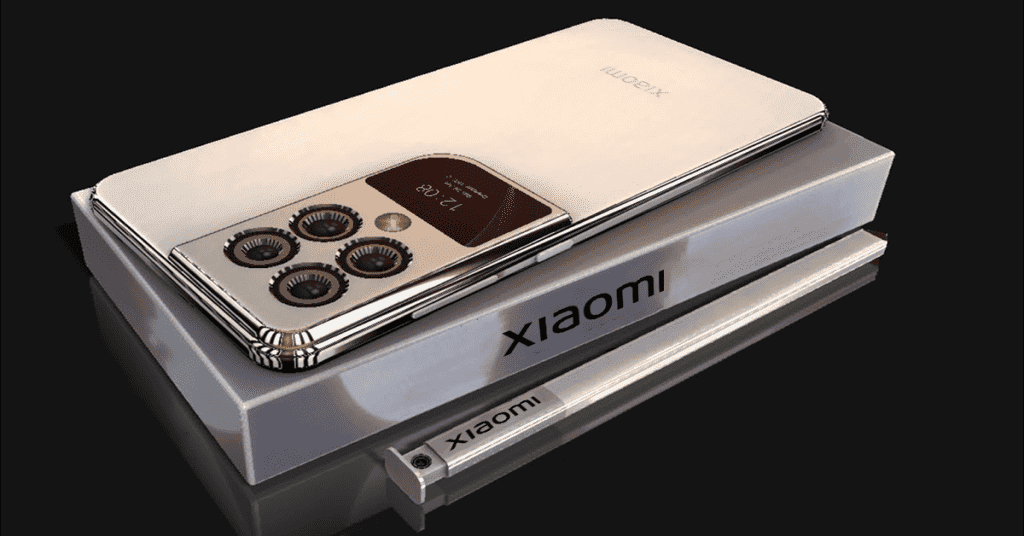
Xiaomi Poco F6 Series specs
Xiaomi’s highly awaited Poco F6 series is finally here. The Poco F6 series consist of the Poco F6 and an F6 Pro variant. The duo of phones crosses the line between the upper-mid-range and flagship killer categories, introducing strong chipsets, rapid charging, and powerful new primary cameras. Let’s take a look at more details now! About the display, the Xiaomi Poco F6 specs carry a 6.67-inch AMOLED with a 1220 x 2712 pixels resolution and a 120Hz refresh rate.
Besides, the Xiaomi Poco F6 Pro specs flaunt a 6.67-inch AMOLED with a 1440 x 3200 pixels resolution. Under the hood, the Xiaomi Poco F6 device uses the Qualcomm Snapdragon 8s Gen 3 chipset, while the Pro version might use the Qualcomm Snapdragon 8 Gen 2 chipset. Both are running on the Android 14-based HyperOS as the operating system. The Poco F6 sports 256GB/ 8GB RAM and 512GB/ 12GB RAM (no card slot). Meanwhile, the Poco F6 Pro ships 256GB/ 12GB RAM, 512GB/ 12GB RAM, and 1TB/ 16GB RAM (no card slot).
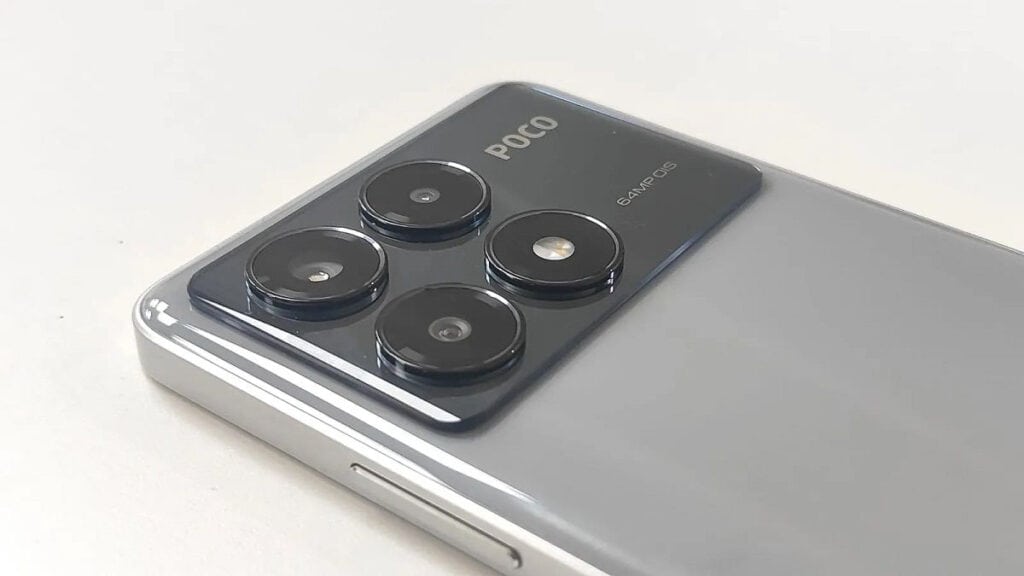
Optics-wise, the Xiaomi Poco F6 cameras boast a 50MP primary lens + 8MP ultrawide shooter at the rear. There is a 20MP lens for capturing and taking selfies. In contrast, the Xiaomi Poco F6 Pro camera rocks a 50MP primary lens + 8MP ultrawide sensor + 2MP macro snapper on the rear system. For selfies and making video calls, there is a single 16MP lens. Besides, the Xiaomi phone comes with an under-display fingerprint scanner. Battery-wise, both handsets house a 5000mAh juice box with 67W/ 120W fast charging. Lastly, the connectivity of this device includes Bluetooth 5.1, Wi-Fi, GPS, USB Type-C 2.0, etc.
Xiaomi Poco F6 Series release date and price
The Xiaomi Poco F6 Series is going on sale soon. Concerning the cost, the Xiaomi Poco F6 price starts at $422 ~ Rs. 35,126, while the Xiaomi Poco F6 Pro price starts at around $541 ~ Rs. 45,032. Would you like to own these new flagships? Let us know in the comment section!
Top trending phones of week 20 2024: 200MP Cameras, 5000mAh Battery!
Join us as we explore the top trending phones of week 20 2024, each featuring 200MP cameras and a 5000mAh battery. Find out more about these smartphones below!
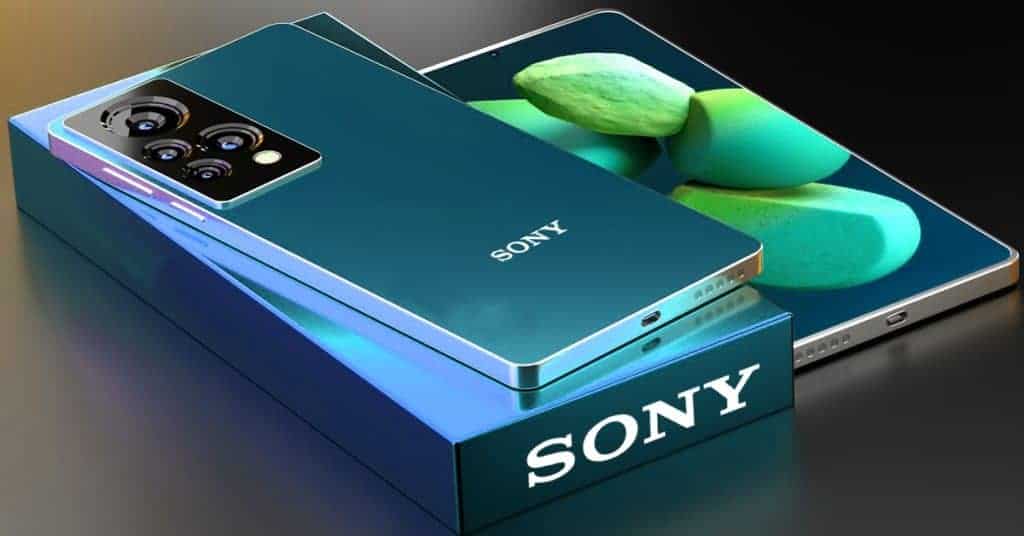
1. Sony Xperia 1 VI
Let’s start our list today with the Japanese brand’s smartphone. The Sony Xperia 1 VI is perfect for photography enthusiasts, offering professional-level features like real-time eye autofocus and burst shooting. Firstly, Sony Xperia 1 VI specs come with a 6.5-inch LTPO OLED with a 1080 x 2340 pixels resolution. How about the battery department? Battery-wise, the Sony device boasts a 5000mAh juice box.
Under the hood, the Sony handset runs on Android 14 as the operating system. Moreover, the Sony machine accepts power from the Qualcomm Snapdragon 8 Gen 3 chipset, paired with 256GB/ 12GB RAM and 512GB/ 12GB RAM (no card slot). Concerning an optics system, the Sony Xperia 1 VI cameras feature a triple 48MP primary lens + 12MP telephoto + 12MP ultrawide sensor on the back and a 12MP front sensor for selfies. The Sony price starts around $1,519 ~ Rs. 126,555.
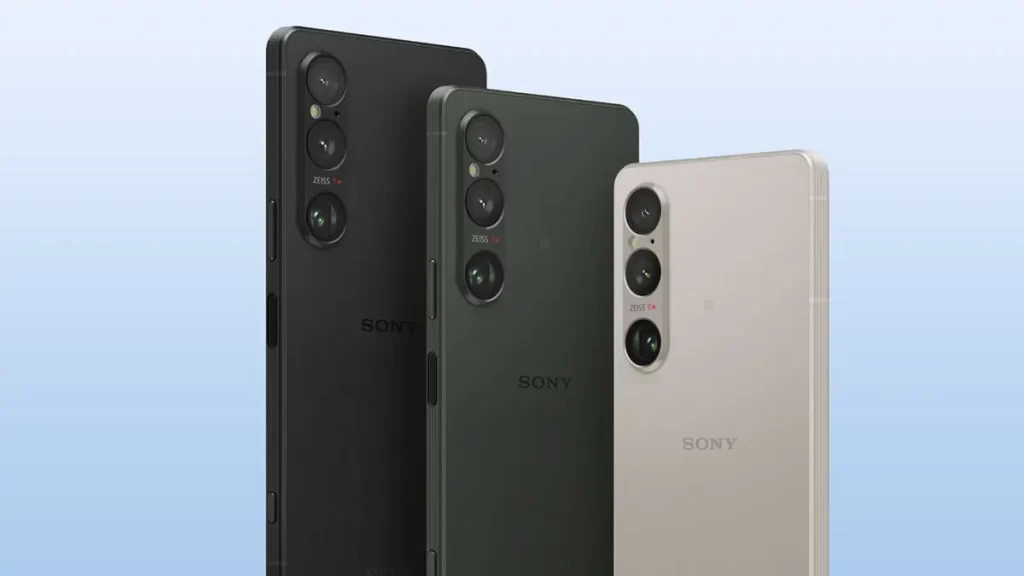
2. Samsung Galaxy A55
Let’s find out more about the next candidate for the top trending phones of the week 20 2024. The Samsung Galaxy A55 is available for purchase, and it has a massive storage capacity and gorgeous design. Concerning the display, Samsung Galaxy A55 specs offer a 6.5-inch Super AMOLED with a 1080 x 2340 pixels resolution. The Samsung device ships with Android 14-based One UI 6 as the operating system and provides the Exynos 1480 chipset. Concerning the memory department, the Samsung handset arrives with 128GB/ 4GB RAM, 128GB/ 6GB RAM, 128GB/ 8GB RAM, 256GB/ 6GB RAM, and 256GB/ 8GB RAM (expandable to 256GB). Imaging-wise, the Samsung Galaxy A55 cameras feature a triple 50MP + 12MP+ 5MP lens on the rear. For selfies, the Samsung handset now sports a single 32MP front-facing snapper. Besides, this device houses a 5000mAh energy box. How about the cost? The Samsung Galaxy A55 price starts around $287 ~ Rs. 23,821.
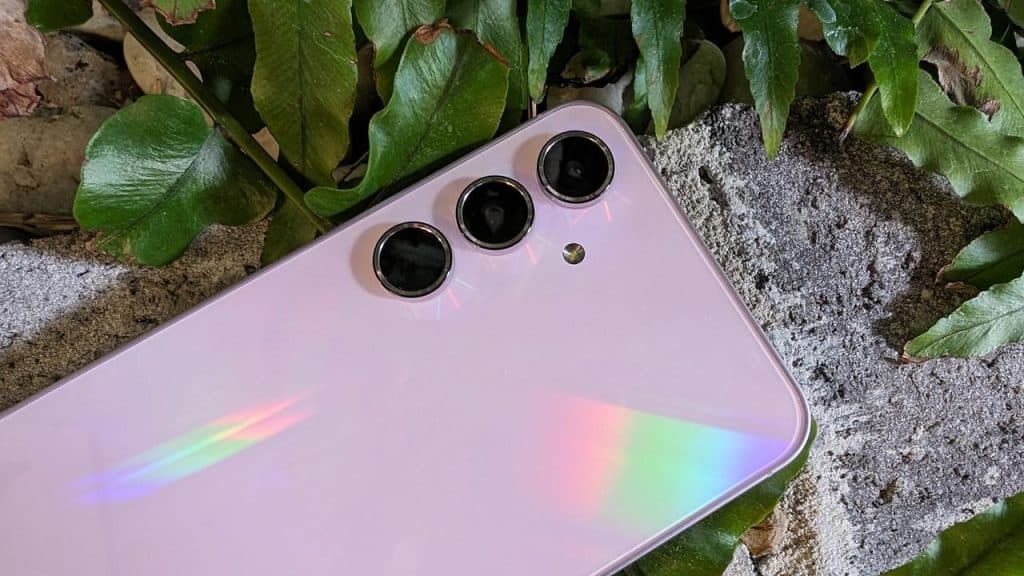
3. Xiaomi Poco F6
The third position belongs to the Xiaomi Poco F6 in our list of top trending phones in week 20 2024. As for the display, Xiaomi Poco F6 specs offer a 6.67-inch AMOLED with a 1220 x 2712 pixels resolution. Powering the Xiaomi machine is the Qualcomm Snapdragon 8s Gen 3 chipset. Regarding storage, the Xiaomi device ships with 256GB/ 8GB RAM, 256GB/ 12GB RAM, 512GB/ 12GB RAM, and 512GB/ 16GB RAM (no card slot). How about an optics system? The Xiaomi Poco F6 cameras feature a dual 50MP primary lens + 8MP ultrawide shooter at the rear and a single 20MP front-facing sensor. Besides, the Xiaomi phone carries a large 5000mAh juice box. On the other hand, the software used on this handset is the Android 14 version. Lastly, the Xiaomi Poco F6 price begins around $185 ~ Rs. 14,948.
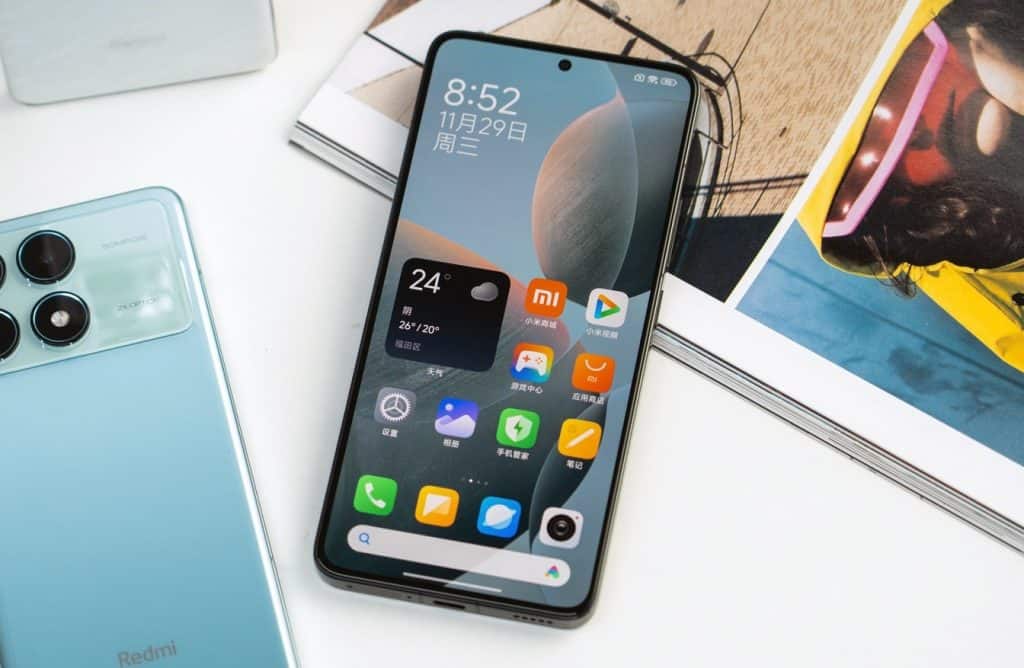
4. Samsung Galaxy S24 Ultra
The Galaxy S24 Ultra surpasses all other phones, enhancing every aspect compared to last year’s Ultra model. It boasts superior battery life, faster performance, and enhanced cameras. However, these improvements come with a slightly higher price tag. Let’s find out more details on this handset now! Concerning the display, Samsung Galaxy S24 Ultra specs pack a 6.8-inch Dynamic LTPO AMOLED 2X with 1440 x 3088 pixels. Under the hood, the Samsung beast drives the Qualcomm Snapdragon 8 Gen 3 chipset. Besides, the Samsung flagship sports 256GB/ 12GB RAM, 512GB/ 12GB RAM, and 1TB/ 12GB RAM (no card slot). Imaging-wise, the Samsung Galaxy S24 Ultra cameras boast 200MP + 50MP + 10MP + 12MP rear lenses and a 12MP front-facing shooter for selfies. Besides, the Samsung juice box has a 5000mAh capacity. The operating system, the Samsung Monster, runs on Android 14. The Samsung Galaxy S24 Ultra price starts at $1,299 ~ Rs. 108,012.
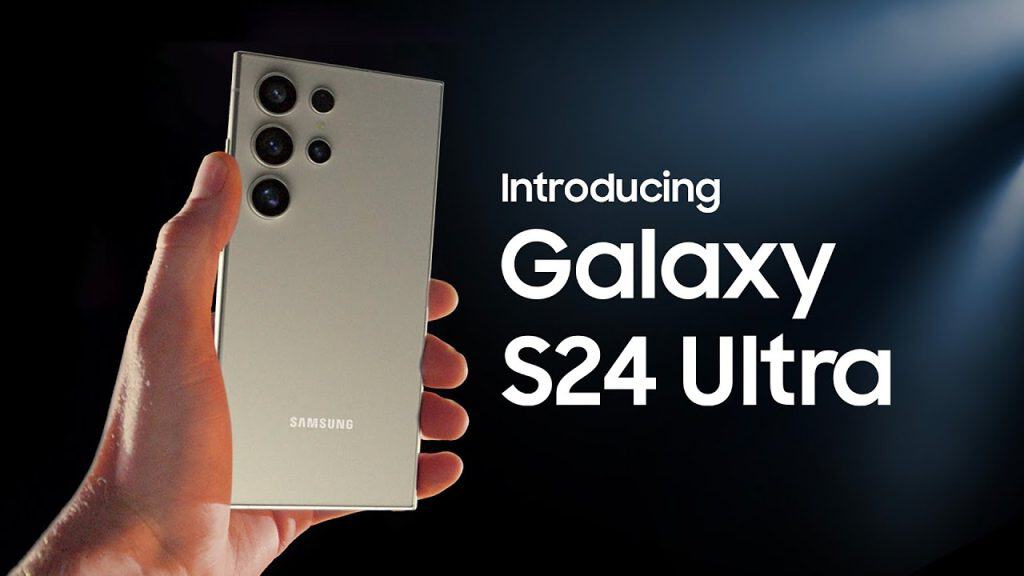
5. Xiaomi Redmi Note 13 Pro
Xiaomi Redmi Note 13 Pro is the next candidate for the top trending phones in week 20 2024. In detail, the Xiaomi Redmi Note 13 Pro specs pack a 6.67-inch AMOLED with a 1220 x 2712 pixels resolution and a 120Hz refresh rate. Under the hood, the Redmi Note 13 Pro device drives the Qualcomm Snapdragon 7s Gen 2 chipset. Furthermore, the Redmi Note 13 Pro handset arrives in various storage variants: 128GB/ 8GB RAM, 256GB/ 8GB RAM, 256GB/ 12GB RAM, 512GB/ 12GB RAM, and 512GB/ 16GB RAM (no card slot). Imaging-wise, the Redmi Note 13 Pro cameras boost triple 200MP + 8MP + 2MP rear lenses and a single 16MP front-facing shooter. Besides, the Redmi Note 13 Pro houses a 5100mAh juice box. Besides, the Redmi Note 13 Pro handset runs on Android 13-based MIUI 14. Lastly, the Redmi Note 13 Pro price starts at around $488 ~ Rs. 40,523.
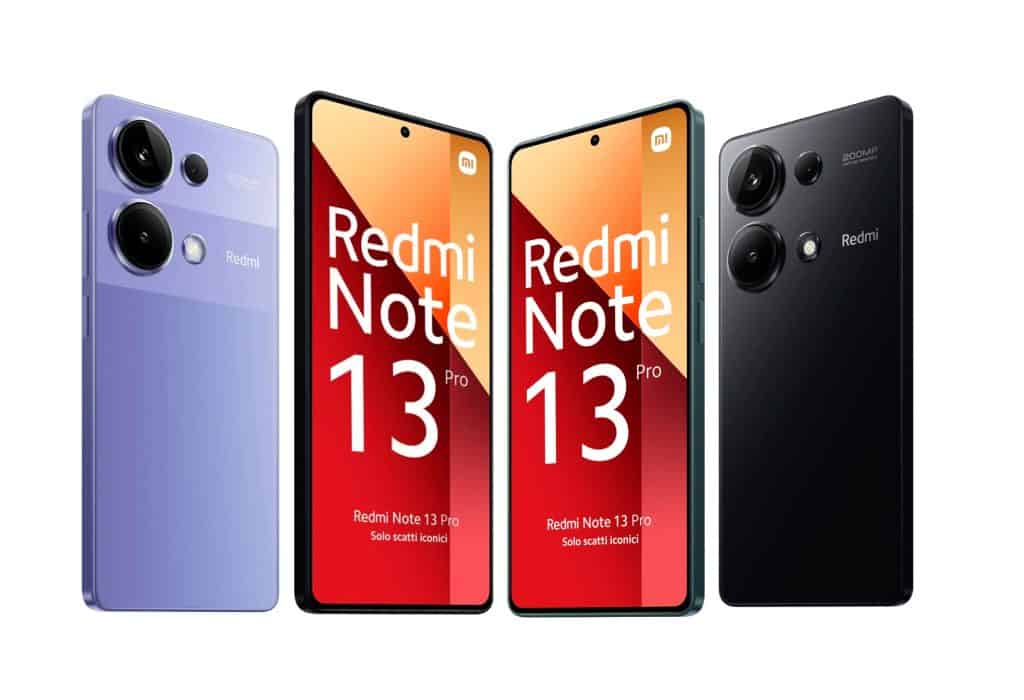
Top trending phones of week 20 2024
These great smartphones all come with fantastic designs and specs! Notably, the Sony Xperia 1 VI caught our attention the most because of its great price and hardware. Furthermore, the Samsung Galaxy S24 Ultra could be an excellent choice for those looking for an amazing optics system. Which handset is your favorite? Please share your opinions with us in the comment section!
Samsung Galaxy Maze vs. Tecno Camon 30 Premier 5G: 108MP Cameras, 7600mAh Battery!
Explore the fierce competition between the Samsung Galaxy Maze vs. Tecno Camon 30 Premier 5G, with 108MP cameras and a 7600mAh battery! See the winner right below!
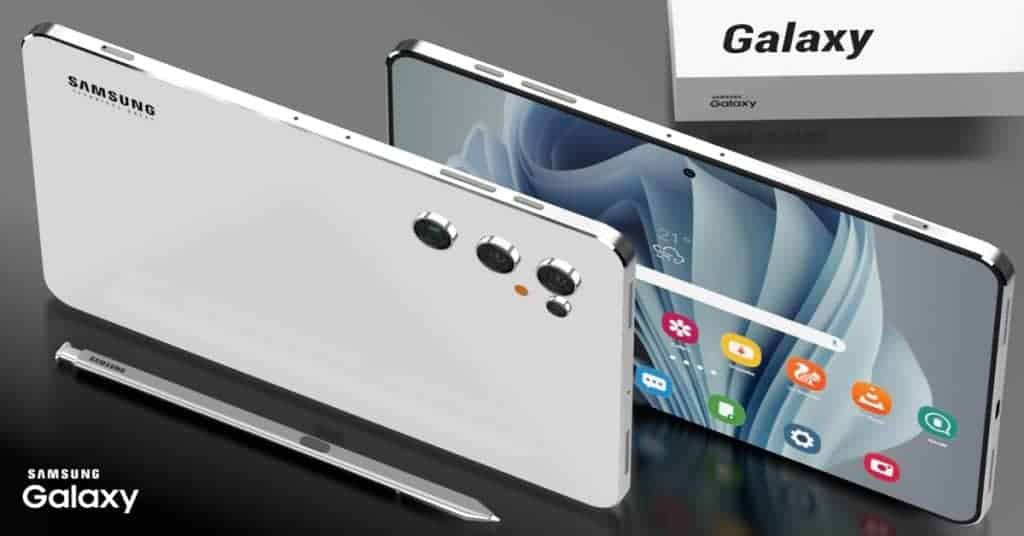
Samsung Galaxy Maze vs. Tecno Camon 30 Premier 5G specs
The Samsung Galaxy Maze is a recent release from the Korean brand, featuring a stunning design and premium configurations. In contrast, the Tecno Camon 30 Premier 5G boasts an impressive, long-lasting battery. Regarding the display, the Samsung Galaxy Maze specs carry a large 6.8-inch Dynamic AMOLED with a 1440 x 3200 pixels resolution.
Besides, the Tecno Camon 30 Premier 5G specs flaunt a 6.77-inch LTPO AMOLED with a 1264 x 2780 pixels resolution. Therefore, the Samsung monster got the first point on the bigger screen in this round.Hardware-wise, the Samsung handset gets power from the Qualcomm Snapdragon 8+ Gen 1 chipset.
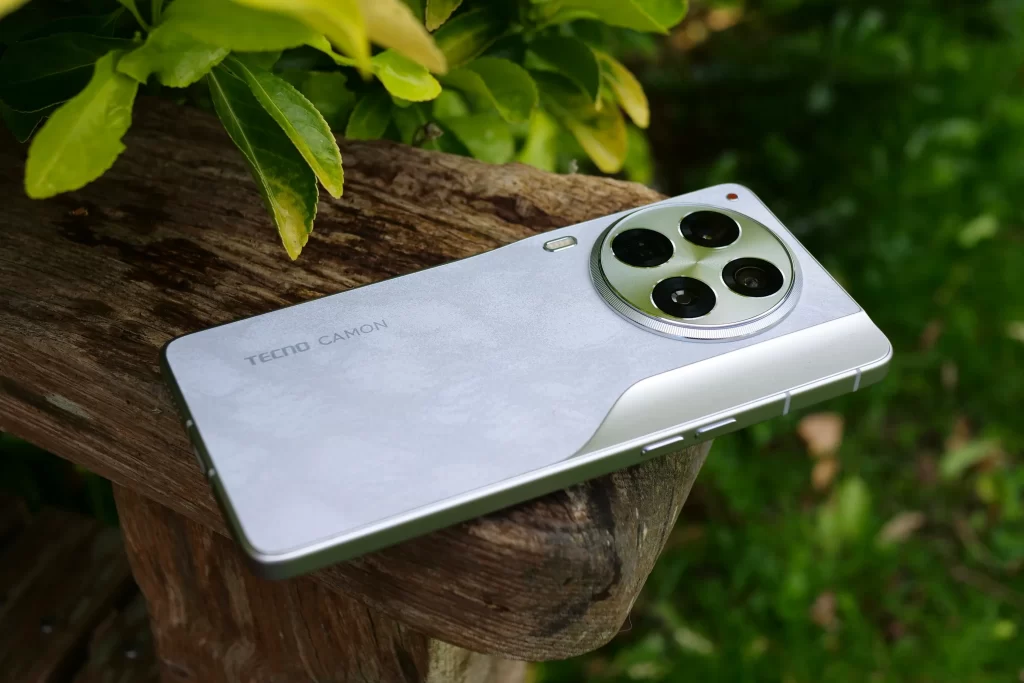
Furthermore, the Tecno handset takes energy from the Mediatek Dimensity 8200 Ultimate chipset as the processor. As for the memory options, the Samsung machine ships 12GB/ 16GB RAM and 256GB/ 512GB ROM (expandable up to 1TB). Meanwhile, the Tecno handset comes with 12GB RAM and 512GB of internal storage (no card slot). Both devices run on the new Android 14 as the operating system. As a result, the Nokia phone won the first round due to its better storage capacity. Optics-wise, the Samsung Galaxy Maze cameras pack a quad 108MP sensor + 50MP lens + 12MP telephoto sensor + TOF sensor on the back. Furthermore, it has a single 32MP front-facing lens. Additionally, the Tecno Camon 30 Premier cameras flaunt a triple 50MP primary lens + 50MP periscope telephoto + 50MP ultrawide sensor on the back. Meanwhile, a single 50MP sensor is on the front for taking selfies. Moreover, the Samsung phone houses a 7600mAh juice box, while the Tecno machine warehouse capacity is 5000mAh. So, the Samsung team is a champion of this fight with better specs!
Samsung Galaxy Maze vs. Tecno Camon 30 Premier 5G release date and price
The Samsung Galaxy Maze release date should be in the next quarter of this year. Besides, the Tecno Camon 30 Premier 5G release date might happen soon. Concerning the cost, the Samsung Galaxy Maze price drops around $299 ~ Rs. 27,622. Plus, the Tecno Camon 30 Premier 5G price can be around $259 ~ Rs. 21,591. Which one do you choose? Drop a comment with your thoughts!
Nokia Nanomax vs. Realme P1: 16GB RAM, 200MP Cameras!
Get ready for the clash of titans: Nokia Nanomax vs. Realme P1 featuring 16GB RAM and 200MP cameras! Find out which flagship device reigns supreme below!
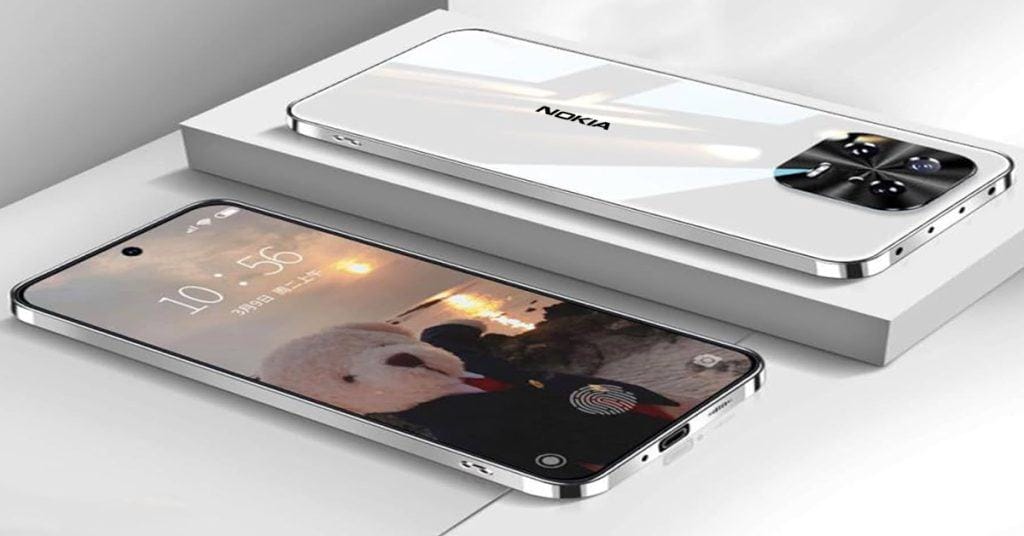
Nokia Nanomax vs. Realme P1 specs
The Nokia Nanomax stands out as one of the most anticipated budget smartphones offering high-end specifications. In contrast, the Realme P1 boasts an impressively large touchscreen display and a suite of premium features. First, Nokia Nanomax specs offer a 6.8-inch AMOLED with a 1080 x 2460 pixels resolution and a tall 21:9 aspect ratio. On the other hand, the Realme P1 specs flaunt a 6.67-inch AMOLED with a 1080 x 2400 pixels resolution.
Second, in terms of memory, the Nokia machine arrives with 8GB/ 12GB/ 16GB of RAM, and different variants of onboard storage, including 256GB and 512GB. Additionally, the memory expands up to 1TB via a MicroSD card. However, the Realme machine ships with 128GB/ 6GB RAM and 256GB/ 8GB RAM (no card slot). Therefore, the Nokia phone takes the lead with a better display and more storage capacity options. Under the hood, this Nokia smartphone works on the Qualcomm Snapdragon 8 Gen 2 chipset.
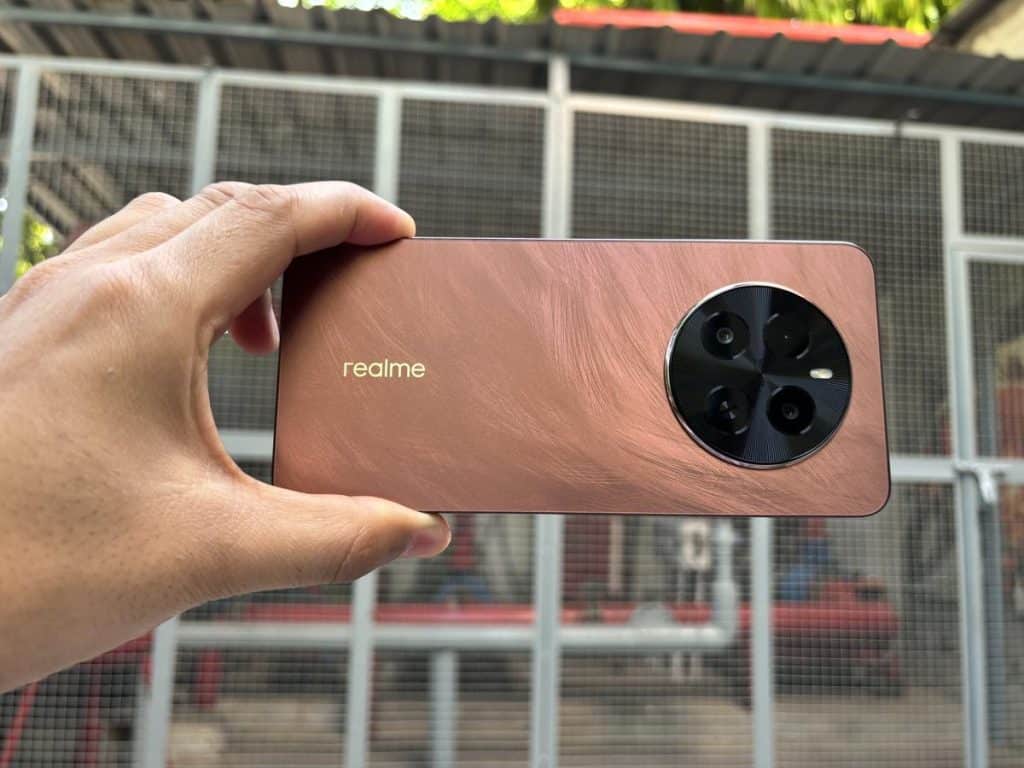
As for the platform, the Nokia handset runs on the Android 14 operating system. In the meantime, the Realme phone gets power from the Mediatek Dimensity 7050 chipset for the processor. Moreover, it runs on Android 14-based Realme UI 5.0 as the operating system. Hence, the Nokia team wins again, offering more robust hardware and a more robust platform. Now, let’s move on to the photography setup! The Nokia Nanomax cameras feature a triple sensor setup on the rear in the optics system. It comprises 200MP primary lens + 50MP ultra-wide lens + 5MP depth sensor. Back to front, this device comes with a single 60MP lens for selfies. Meanwhile, the Realme P1 cameras offer a dual-lens at the rear setup: 50MP primary lens + 8MP ultrawide sensor. Back to front, the Realme handset has a single 16MP selfie shooter. Lastly, the Nokia monster keeps the lights on with a huge 7500mAh juice box, overperforming its rival with a smaller 5000mAh battery cell.
Nokia Nanomax vs. Realme P1 release date and price
The Nokia Nanomax release date should fall in the next quarter of 2024. Besides, the Realme P1 release date occurred in April 2024. About the cost, the Nokia Nanomax price shall fall around $220~ Rs. 18,277. Nevertheless, the Realme P1 price begins at around $191 ~ Rs. 15,957. What do you think about those two phones? Which one do you prefer? Let us know in the comment section below!
